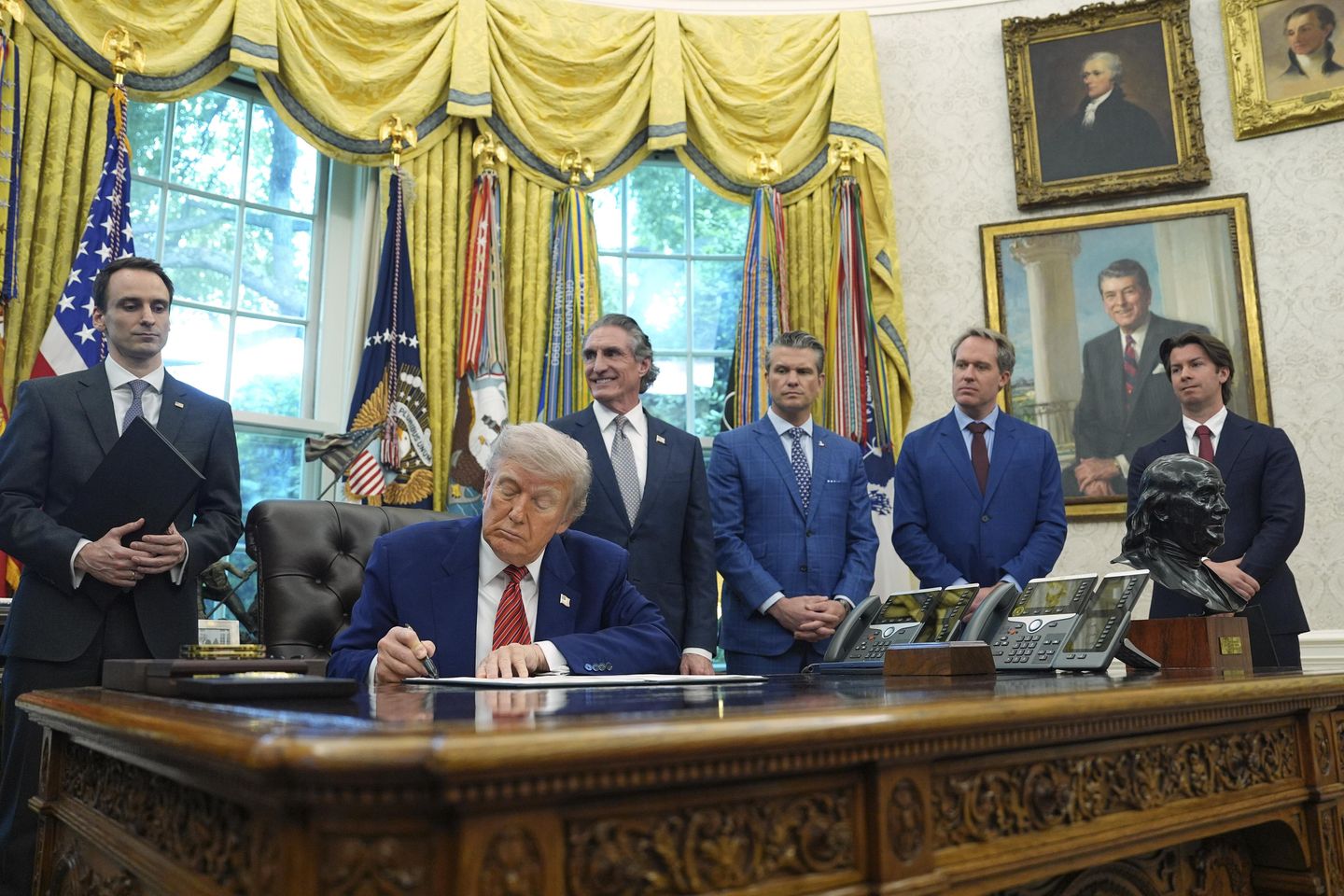
President Trump heads into the summer of 2025 having racked up a series of second-term wins, including curtailing runaway illegal immigration, netting trillions of dollars in business investment from the Middle East, reducing inflation, lowering gasoline prices and exceeding Wall Street’s job creation forecasts.
He’s embarked on mass deportations of illegal immigrants, purged woke policies from the government and taken dramatic steps to shrink the federal bureaucracy, though many of these moves are tangled up in the courts.
However, Mr. Trump also roiled the stock market with get-tough trade policies, and his poll numbers are starting to slide after spending much of the past four months above water.
Voters are likely overlooking Mr. Trump’s accomplishments, said Republican strategist Jimmy Keady.
“He’s governed with conviction, not calculation – prioritizing American workers over global elites. That kind of leadership isn’t just bold, it’s effective. And it remains exactly why he remains a dominant force in American politics,” Mr. Keady said.
He pointed to the House recently passing Mr. Trump’s “big, beautiful bill,” which not only cuts taxes but heads off the largest tax hike in history by stopping the 2017 Trump tax cuts from expiring.
He credited Mr. Trump with helping bring down gas prices by increasing energy production and slashing unnecessary government spending.
Mr. Trump’s critics, however, say the dip in the polls reflects Americans’ exasperation with the president.
Brad Bannon, a Democratic strategist, said he would give Mr. Trump an “F” for his handling of the economy, predicting that issue will hand the House and Senate back to the Democrats during next year’s midterm election.
“Given Trump’s approval ratings and completely reckless economic promises, which are increasing prices, there’s a decent chance of Democrats taking the midterms,” he said. “Trump promised to reduce prices on day one, and so far it’s been a complete disaster.”
An aggregate of polls compiled by Real Clear Politics shows that voters gave Mr. Trump the poorest marks on his handling of the economy and inflation.
Roughly 47.7% of Americans approve of the job Mr. Trump is doing, compared to 49.3% who disapprove. It’s an improvement from earlier this month when 51% of Americans disapproved of his job performance and 45% approved. However, as recently as March, the president was above 50% approval.
Mr. Trump’s two biggest areas of struggle are the economy, where he was underwater by 11% (53% disapprove and 42% approve), and inflation, where Mr. Trump was down by 21% (60% to 39%). Voters gave him high marks for his handling of immigration, where above water by 3%, according to the aggregate polling.
Despite the frustration with the economy that is evident in the polls, prices are dropping compared to a year ago but above pre-pandemic levels.
For example, the prices of smartphones dropped 14% compared to May 2024, according to the Bureau of Labor Statistics’ Consumer Price Index. Gas is down 12%, and clothes are down 5%. The price of some food products, including lettuce and tomatoes, is down by as much as 6%.
Mr. Trump’s sweeping proposal to put tariffs on virtually all of the U.S. trading partners triggered a massive sell-off in the financial markets, raising fears about a potential recession.
The markets rebounded, regaining most of their losses, after Mr. Trump backed off some of his most controversial tariff policies and announced trade deals with the United Kingdom and China.
At the same time, U.S. businesses keep adding jobs, even as Mr. Trump and the Department of Government Efficiency have fired tens of thousands of government workers.
Employers added 177,000 jobs in April, well above economists’ modest expectations of 135,000 new jobs. The better-than-expected data shows the market remains resilient in the face of Mr. Trump’s trade wars and government layoffs.












